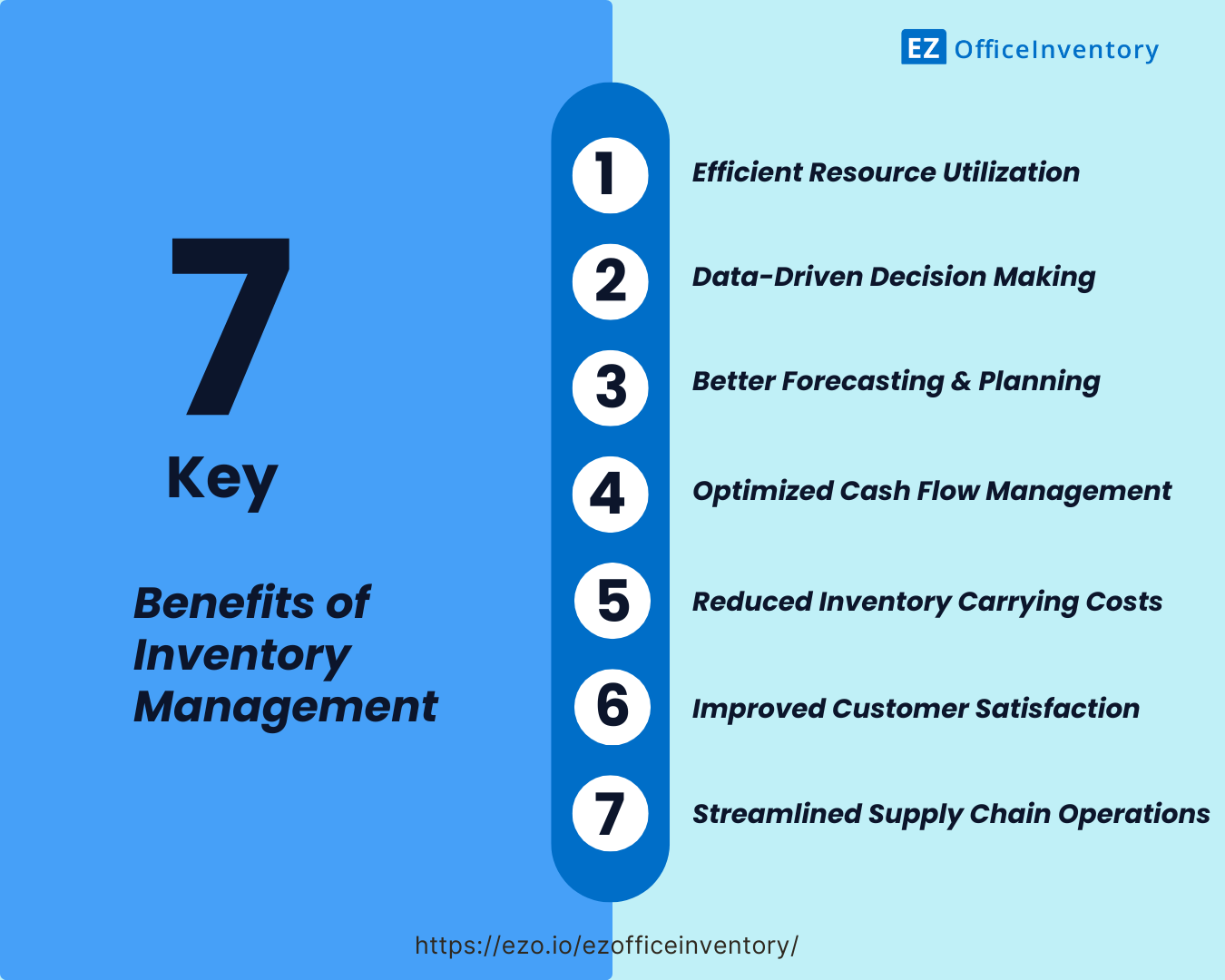Inventory management is an essential component of any organization. At its core, inventory management is about maintaining optimal inventory levels at all times. Proper inventory management can lead to increased efficiency, improved customer satisfaction, and ultimately, higher profits. On the other hand, poor inventory management can result in stockouts, overstocking, and lost sales, all of which can negatively impact your bottom line.
In this article, we will explore the importance of inventory management, the key components involved, and the best practices that businesses can implement to improve their inventory management processes.
What is inventory management?
Inventory management refers to the process of careful monitoring, organization, and control of an organization’s inventory. It ensures that a business has enough stock on hand to meet customer demand while avoiding excess inventory that ties up capital and takes up valuable warehouse space.
The global inventory management software market is expected to grow with a CAGR of 9.7% between 2024-2030. The market size is projected to reach $4.06 Billion by 2030 from almost 2.3 billion in 2024. This growth is a testament to the power of technology in streamlining inventory management across various industries.
Why is inventory management important for a business?
Inventory management plays a vital role in efficient supply chain and warehouse management, driving overall business success. No wonder why 36% of supply chain professionals are prioritizing inventory management, according to a recent study.
Inventory management has seven primary benefits for businesses:
1. Efficient resource utilization
One of the main roles of inventory management is to ensure that a business has the right quantity of stock at the right time, preventing overstocking or stockouts. This level of efficient utilization of resources helps minimize waste, reduce carrying costs, and optimize storage space.
By maintaining optimal inventory levels, businesses can maximize the use of their resources, such as raw materials, finished goods, and capital, leading to improved productivity and cost savings.
2. Data-driven decision-making
With accurate and real-time inventory data, businesses can make informed decisions about purchasing, production, and sales strategies based on factual information rather than guesswork. Real-time visibility into stock levels, demand patterns, and supply chain dynamics enables data-driven decision-making, leading to better resource allocation, improved forecasting accuracy, and ultimately, increased profitability.
According to research, businesses that leverage data-driven decision-making can see a 4% increase in productivity and a 6% increase in profitability.

3. Better forecasting and planning
By analyzing historical inventory data and demand trends, businesses can forecast future requirements more accurately, enabling better production planning, inventory replenishment, and capacity management.
Accurate forecasting allows businesses to anticipate demand fluctuations, optimize inventory levels, and avoid stockouts or excess inventory situations. This leads to improved forecasting, and ensures a seamless flow of goods and services, minimizing disruptions and enhancing operational efficiency.
4. Optimized cash flow management
Maintaining optimal inventory levels helps businesses maintain sufficient stock levels, and avoid capital tied up in excessive inventory.
By minimizing overstocking, businesses can free up working capital that would otherwise be tied up in idle inventory. This optimization of working capital improves cash flow management and enhances overall financial performance, providing businesses with greater financial flexibility.
5. Reduced inventory carrying costs
Research suggests that carrying costs for excess inventory can range from 20% to 30% of the inventory value annually. Effective inventory management minimizes the costs associated with holding excess stock, such as storage, insurance, and obsolescence costs. By reducing these carrying costs, businesses can improve their bottom line and reinvest the savings into other areas of growth, such as product development, marketing, or expansion.
Additionally, minimizing excess inventory helps businesses avoid the risk of obsolescence, which can lead to significant financial losses if products become outdated or unsaleable.
6. Improved customer satisfaction
Inventory management’s role in delivering exceptional customer experiences directly impacts bottom lines. By ensuring the right products are available when customers need them, businesses can enhance customer satisfaction and loyalty. Prompt order fulfillment, minimized stockouts, and efficient delivery contribute to a positive customer experience, driving repeat business and referrals.
Satisfied customers are more likely to recommend the company to others, leading to increased brand loyalty and a stronger competitive position in the market. A famous study by Bain & Company found that a 5% increase in customer retention can boost profits by 25% to 95%.
7. Streamlined supply chain operations
Inventory management plays a crucial role in coordinating the flow of goods throughout the supply chain. By maintaining visibility and control over inventory levels, businesses can streamline operations, reduce lead times, and improve collaboration with suppliers and logistics partners.
Effective inventory management enables businesses to minimize disruptions, and respond quickly to changes in demand or supply conditions, resulting in increased efficiency, reduced costs, and improved customer service.

5 key components of inventory management
A successful inventory management strategy revolves around five key components:
1. Inventory tracking and control
Proper inventory tracking and inventory control are crucial for efficient stock management. They involve implementing systems and processes to monitor and manage inventory levels accurately, like barcodes, RFID tags and inventory management software. These tools help track stock movements, locations, and quantities in real-time.
Periodic physical inventory counts and reconciliations are also essential to ensure data accuracy.
2. Forecasting and demand planning
Accurate demand forecasting is vital for efficient inventory management. It involves analyzing historical sales data, market trends, and customer behavior to predict future demand for products. This information is then used to plan inventory levels, production schedules, and procurement activities.
Techniques like time-series analysis, regression analysis, and qualitative methods like market research can be employed for forecasting. Effective demand planning helps organizations avoid stockouts or excess inventory.
3. Reorder points management
Determining optimal reorder points for each item is crucial to ensure timely stock replenishment. The reorder point is the level at which an order should be placed to replenish inventory, considering lead times and buffer stock. It is typically calculated based on factors like average demand, lead time, safety stock requirements, and order quantities.
A successful reorder point management ensures that stock is replenished before it runs out, maintaining continuity of operations.
4. Safety stock management
Safety stock is an additional inventory buffer maintained to mitigate the risks of stockouts due to unexpected demand fluctuations, supplier delays, or other disruptions. Determining the appropriate safety stock levels involves analyzing demand variability, lead time variability, and the desired service level.
Too much safety stock can lead to excessive carrying costs, while too little can result in frequent stock-outs. Effective safety stock management balances the costs of carrying inventory with the risks of stock-outs.
5. Vendor management
Effective inventory management also involves managing relationships with vendors. This includes evaluating and selecting reliable vendors, negotiating favorable terms and pricing, monitoring supplier performance, and maintaining open communication channels.
Supplier management practices like vendor-managed inventory (VMI) and just-in-time (JIT) delivery can help streamline inventory flows and reduce carrying costs. Regular supplier performance reviews and contingency planning for potential supply chain disruptions are also crucial aspects of suppliers management.
Best practices for effective inventory management
Here are some of the best practices that businesses can adopt to effectively manage their inventory:
1. Conduct regular inventory audits
Regular inventory audits are essential for maintaining accurate inventory records and ensuring compliance with inventory management policies. Audits enable businesses to detect discrepancies between recorded stock levels and actual stock on hand, spot errors or inaccuracies in inventory recording, and rectify them promptly.
By performing periodic audits, businesses can detect inaccuracies quickly, rectify them quickly, and maintain accurate inventory records for their business. This can help reduce the risk of stockouts, overstocking, and other inventory-related issues.
2. Use FIFO approach
Using the first-in, first-out (FIFO) approach is crucial for successful inventory management, as it ensures that the oldest inventory items are sold or utilized first. This approach helps prevent inventory obsolescence, reduces waste, and improves inventory turnover.
By using the FIFO approach, businesses can ensure that their inventory is fresh and in good condition, which can help improve customer satisfaction and loyalty. This approach also helps businesses maintain accurate inventory records and reduce the risk of inventory-related issues.
3. Automate inventory management
Automating inventory management processes can help businesses improve efficiency, reduce errors, and minimize the time and effort required for inventory management. Automation technologies such as barcode scanning, RFID, and inventory management software can provide real-time visibility and tracking capabilities for inventory management, reducing human errors and improving accuracy.
Automated systems can provide real-time updates on stock levels, helping businesses track usage patterns, detect stockouts or overstocking situations, and create effective replenishment strategies. This can help businesses optimize their inventory levels, reduce excess inventory costs, and enhance supply chain efficiency.
4. Establish safety stock levels
To effectively manage inventory, businesses should establish safety stock levels to mitigate the risk of stockouts and protect customer loyalty.
Safety stock acts as an emergency reserve of inventory that can meet unexpected demands or deal with supply chain disruptions. Calculating this reserve based on historical data helps businesses ensure that they have enough inventory always to meet customer demand, even in the face of unexpected events or disruptions.
5. Monitor lead times
The monitoring of lead times is crucial for an inventory management process.By monitoring lead times, businesses can anticipate delays or disruptions in the supply chain and adjust their inventory levels and replenishment strategies accordingly.
This way businesses can prepare beforehand for any unexpected events.
6. Analyze data for insights
Analyzing inventory data is a crucial need of the inventory management process. It enables businesses to make data-driven decisions, accurately forecast demand, and optimize inventory levels accordingly.
By merging sales data with inventory data, businesses can gain valuable insights into consumer behavior and demand trends, and make informed decisions about inventory management. This can help businesses optimize their inventory levels, reduce excess stock levels, and enhance supply chain efficiency overall.
7. Train employees
Proper training of employees is a key best practice for effective inventory management. By instructing employees in inventory control practices, using inventory software solutions, and following standard operating procedures effectively, training enhances their ability to carry out inventory tasks effectively and minimize errors.
Investing in training ensures that processes are performed precisely, reducing errors and increasing overall supply chain efficiency.
8. Review and improve processes
Regular reviews and optimizations of inventory management processes are essential for identifying inefficiencies and taking appropriate actions.
Lean principles, Six Sigma methodologies, and other frameworks of continuous improvement can be applied to reduce waste, increase accuracy and productivity, and improve overall supply chain efficiency. By reviewing and improving inventory management processes, businesses can optimize their inventory levels, reduce excess inventory costs, and enhance supply chain efficiency overall.
Enhanced inventory management for faster operations
Effective inventory management isn’t just about counting items—it’s about optimizing processes, leveraging technology, and maintaining a delicate balance between supply and demand. From ensuring product availability and preventing stockouts to minimizing costs and enhancing customer satisfaction, a robust inventory management system empowers businesses to oversome challenges and succeed.
By understanding the importance of inventory management, its key components, and best practices, businesses can optimize their inventory levels, minimize costs, and ultimately increase profitability.
Frequently Asked Questions
1. Why is inventory management important?
The significance of inventory management lies in its ability to help businesses minimize costs, reduce waste, and improve customer satisfaction by ensuring that the right products are accessible at the right time.
2. What are the 5 key components of an inventory management process?
Five key inventory management components are
- Inventory tracking and control
- Demand forecasting and planning
- Reorder point management
- Safety stock management
- Vendor management
3. What role does technology play in inventory management?
Technology plays a significant role in inventory management, enabling businesses to automate processes, analyze data, and improve efficiency. With advanced inventory management software, such as EZOfficeInventory, businesses can track inventory levels in real-time, optimize inventory levels, and make informed decisions.







